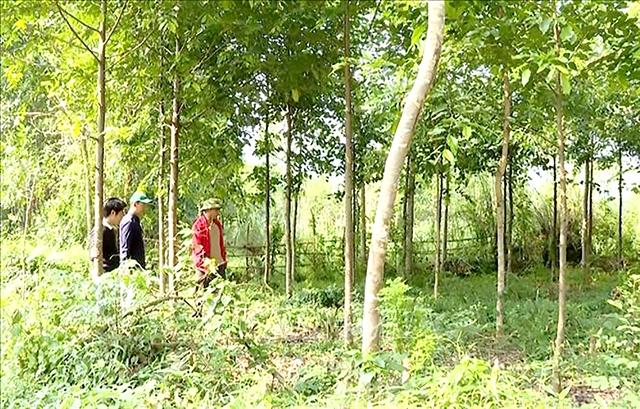 Environment
Environment

 |
| A planted forest in Cao Quảng Commune, Tuyên Hóa District. — VNA/VNS Photo |
QUẢNG BÌNH — With a vast forest area of 590,000ha, Quảng Bình central province ranks second in the country in terms of forest coverage with 68 per cent, representing significant potential for generating forest carbon credits and giving the opportunity for the province to participate in the forest carbon credit market.
Director of the provincial Department of Agriculture and Rural Development Mai Văn Minh said Quảng Bình will receive VNĐ235 billion for reducing more than 2.4 million tonnes of carbon dioxide emissions during 2023-2025.
This is the amount that the province will receive under the emission reduction agreement between the Ministry of Agriculture and Rural Development and the World Bank, with Quảng Bình being one of the six provinces in the northern central region participating in this agreement.
The money it received in late 2023 will be used for paying forest owners, local people and communities to manage, protect and develop forests, he said.
Participating in the forest carbon credit market will help forest owners enhance the productivity of planted forests, improve sustainable livelihoods, contribute to the protection of existing forest areas, and increase forest coverage, Minh said, adding that this opens up new opportunities for local residents to develop the economy through forest conservation, especially when the exploitation of forest products under the canopy is challenging.
More than 469,300ha of forest to claim carbon credits in the year, he said, highlighting that the province will review the forest area and forest coverage to work with its partners who want to purchase carbon credits, to increase income for local people.
Nguyễn Đức Sự, a resident from Cao Quảng Commune, Tuyên Hóa District, said he cared for the trees in his forest every day.
Five years ago, he decided to green the hills in Cao Quảng Commune with native tree species.
Currently, the young trees have grown well, with over 5,000 large trees covering more than three hectares of previously vacant land and bare hills.
"I feel very happy whenever I enter the forest and see the trees growing well. It takes 20-30 years to have such native forests, and our future generations will benefit from them," Sự told Tin Tức (News) newspaper.
"Planting trees, especially medicinal plants under the forest canopy, contributes to the biodiversity of the forest. As the trees grow, the forest becomes greener, the humidity increases, and the source of water becomes more abundant."
"We need clean water to drink and clean air to breathe, so we must care for and protect the forest."
According to Nguyễn Quang Huy, vice chairman of the People's Committee of Cao Quảng Commune, the locality has a large forest area and high forest coverage.
The forests are not planted for timber sales, but many households engaged in forest planting have achieved good incomes from harvesting non-timber forest products, such as planting short-day crops and medicinal plants under the forest canopy.
The commune aims to achieve 90 per cent forest coverage, gradually increasing the natural forest area and reducing the planted forest area. The locality is also encouraging residents to protect and develop sustainable forests, planting native trees for long-term sustainability and generating carbon credits for the market.
In recent years, authorities in Tuyên Hóa District have encouraged local residents to protect and plant large timber forests with native tree species. The growers have been also supported with seedlings to develop forest.
Every year, Quảng Bình Province plans to plant about 9,000ha of concentrated forests and millions of scattered trees, aiming to maintain and enhance forest coverage.
According to the roadmap, by 2025, the province's raw material forest planting areas will exceed 100,000ha, including more than 16,200ha of large timber forests. — VNS




